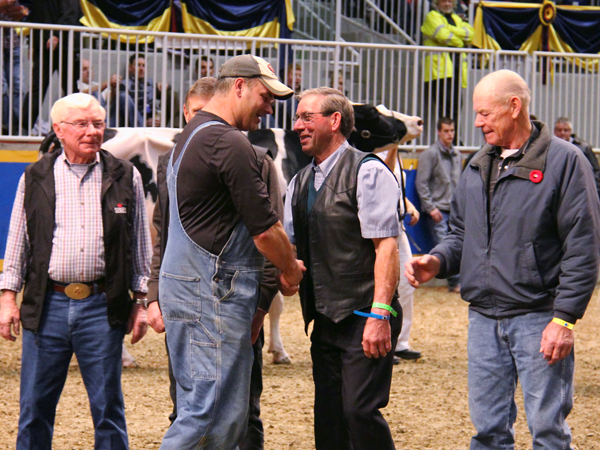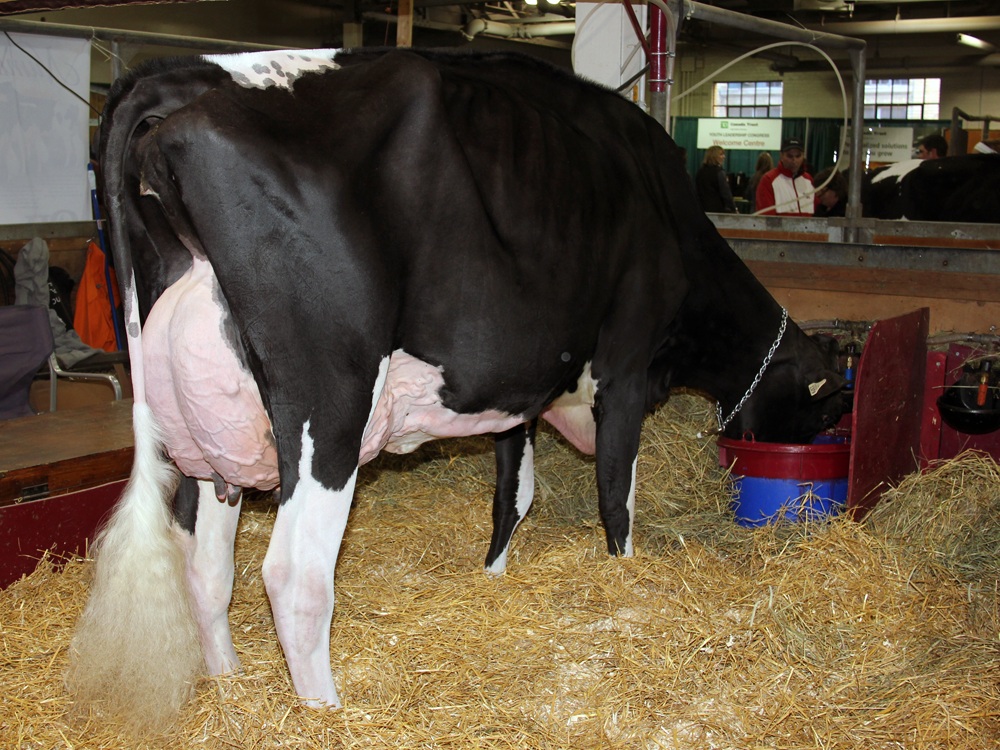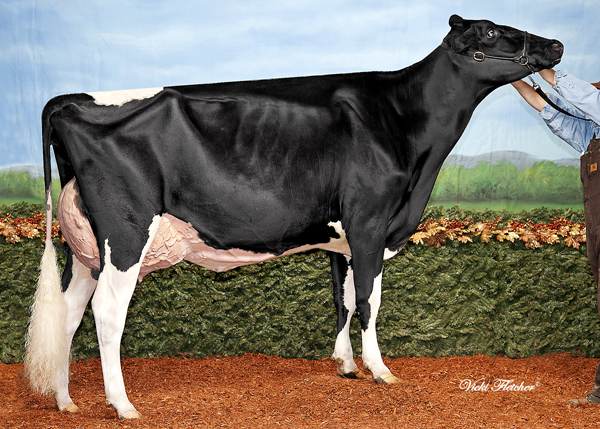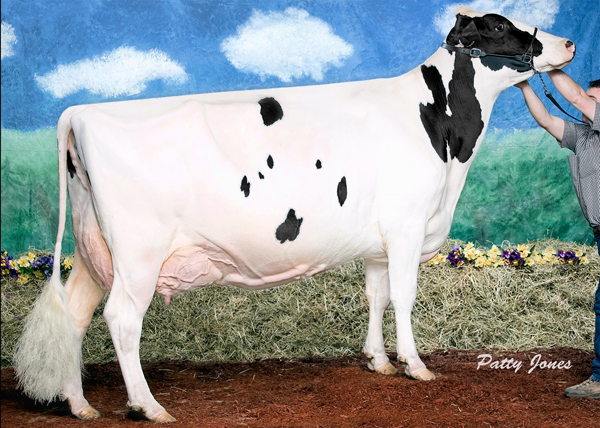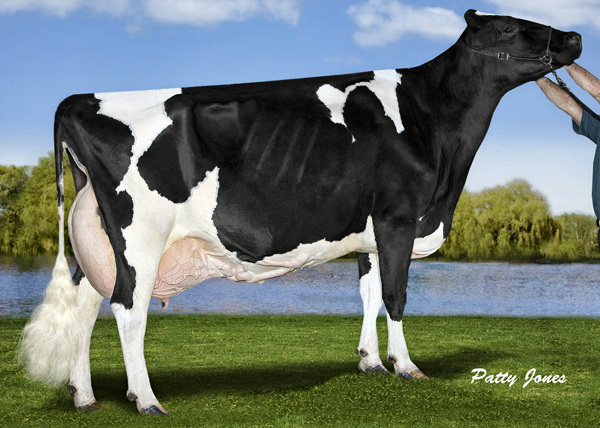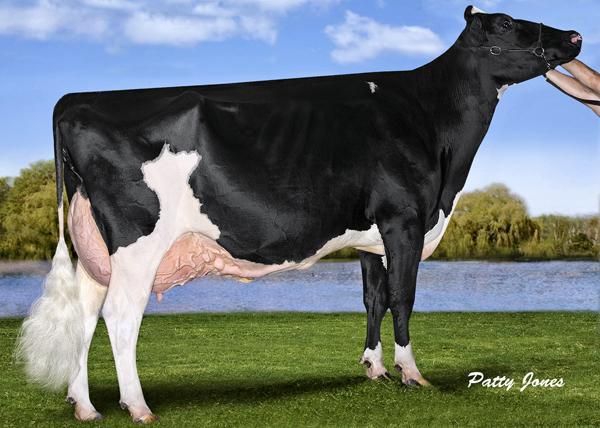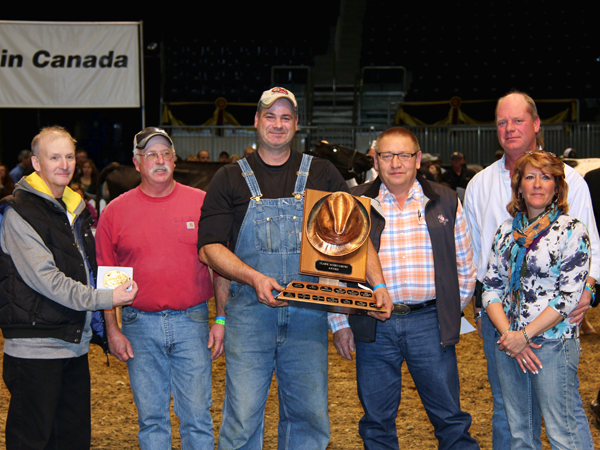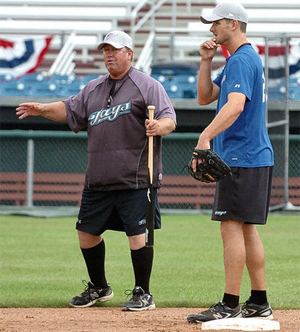Learn how Joel Phoenix was awarded the 2024 Curtis Clark Achievement Award winner. What makes him a leader in this field?

At the heart of Toronto’s grand spectacle, the Royal Agricultural Winter Fair, a resounding moment, captured the essence of dedication and excellence. From the illustrious Dappleview Holsteins, Joel Phoenix clinched the 2024 Curtis Clark Achievement Award—a recognition of talent and enduring commitment to the dairy industry. This award is prestigious among Canadian dairy exhibitors, celebrating those who embody the spirit of ability, sportsmanship, and unwavering dedication. Why does this accolade resonate so profoundly within the dairy farming community? Perhaps it challenges us to reflect on what it truly means to excel in this field. Is it merely about achieving top-quality show animals, or does it dive deeper into the ethos of agricultural passion and innovation? Let us delve into the unique achievements of Joel Phoenix and consider the broader implications for excellence in every corner of dairy farming.
From Humble Beginnings to Global Recognition: Joel Phoenix’s Ascendant Path in Dairy Excellence
Joel Phoenix’s journey in the dairy industry is a testament to unwavering dedication and inspiration. His roots in this field were firmly planted in his early days as a 4-H member, where he showcased his potential by emerging as the Champion Showman at the Scotiabank Hays Classic in 2000. This accolade marked the beginning of his illustrious career in dairy cattle exhibition, a journey that continues to inspire others in the industry.
Joel’s professional journey as a dairy cattle fitter propelled him onto the global stage, where his expertise and talent became widely recognized. Over his 15-year career, Joel not only honed his skills working with renowned animals but also played a significant role in fostering the development of other farms and exhibitors. His commitment to promoting industry excellence and his knack for spotting and nurturing top-tier show animals have only strengthened his reputation as a cornerstone of the dairy community, offering support and encouragement to others in the industry.
A staunch advocate for others in the industry, Joel has encouraged various farms to showcase their animals. His support often extends beyond mere words, taking practical shape as he includes these animals in his showstring and offers hands-on assistance to exhibitors, thus uplifting the entire dairy exhibition landscape.
Mastery Beyond the Ring: How Joel Phoenix Shapes Champions and Defines Standards
Joel Phoenix has an unparalleled knack for identifying and nurturing top-tier show animals. This skill sets him apart in the dairy industry. His ability to spot potential has led to the success of numerous renowned show cows on the international stage, with many attaining coveted All-Canadian and All-American statuses. Among the many remarkable animals he has worked with are Robrook Goldwyn Cameron and Lovhill Goldwyn Katrysha, who represent the excellence that Phoenix consistently brings to the forefront. His eye for quality and an unerring sense for marketing and exhibiting have propelled these animals into the limelight and garnered accolades for him and his partners.
Beyond his prowess in the exhibition ring, Phoenix’s impact extends to his esteemed Official Holstein Canada Judge role, where his expertise resonates across borders. Having judged prestigious events throughout Canada, the United States, Australia, and Mexico, Phoenix’s influence is far-reaching. His international experience underscores the global trust in his discerning judgment, further solidifying his status as a leading figure in dairy excellence, a fact that brings pride and respect to the entire dairy community.
The Phoenix Legacy: A Fusion of Dairy Prowess and Equestrian Excellence
At the heart of Joel Phoenix’s endeavors lies a profound family commitment to the agricultural and equestrian realms. Joel, alongside his wife, Jessica—a distinguished three-time Olympian and stalwart member of the Canadian Equestrian team—has cultivated a legacy that merges two venerable traditions: dairy excellence and equestrian mastery. Their shared passion and the support of their family members manifest strongly at Phoenix Equestrian & Holsteins, whose ventures encompass various agricultural and equestrian pursuits.
Situated on a sprawling 100-acre farm, this multifaceted enterprise is a testament to their dedication and expertise. Focusing on breeding and merchandising elite show animals; they continue to set benchmarks in the dairy industry by producing high-caliber genetics. Furthermore, the farm’s operations extend beyond Holstein cattle to embrace a 50-cow beef herd, complemented by 75 yearlings that benefit from pasture feeding and finishing. Adding to this diverse agricultural repertoire, they engage in a thriving hay sales business.
Their talents also shine in equestrian sports. Jessica’s illustrious career and profound insight into equine care and sportsmanship influence the Phoenix family’s equestrian training facility, a hub for aspiring athletes. By intertwining these pursuits, the Phoenix family not only upholds a tradition of excellence but also nurtures the next generation in dairy farming and equestrian prowess. This unique blend of skills and experiences has not only enriched the Phoenix family’s life but also brought a fresh perspective to the dairy industry, inspiring new approaches and fostering a culture of innovation.
Curtis Clark Achievement Award: Honoring Excellence and Integrity in Canadian Dairy
The Curtis Clark Achievement Award is a prestigious beacon in the Canadian dairy industry. Established in 1988 by the Alberta Holstein Association, it commemorates the late Curtis Clark of Acme Holsteins, an esteemed dairy breeder and exhibitor known for his commitment to excellence and integrity. The award’s essence lies in its tribute to individuals who demonstrate exceptional skill in exhibiting dairy cattle and epitomize the values of sportsmanship, dedication, and leadership vital to nurturing and advancing the agricultural community.
This accolade is more than a testament to technical ability; it celebrates a holistic contribution to the industry, acknowledging those who have fostered camaraderie, shared knowledge, and inspired future generations. Joel Phoenix’s 2024 receipt of the award underscores his unwavering passion and influence in the sector. Phoenix personifies the award’s ideals with a career pathway that has seen him shape, present, and judge elite livestock on a global stage. His journey reflects a tireless commitment to nurturing not just championship-level animals but also cultivating an ethos of collaboration and excellence. By doing so, he not only honors himself but also perpetuates the legacy of Curtis Clark through every meticulously prepared show-ring appearance.
The Bottom Line
Joel Phoenix’s recognition with the 2024 Curtis Clark Achievement Award underscores the potential impact of combining dedication, skill, and innovation in the dairy industry. His journey from a 4-H champion to a global influencer in dairy cattle exhibition while balancing equestrian excellence with dairy production highlights the untapped potential within agriculture. For dairy farmers and industry professionals, Phoenix’s story prompts a vital question: How can his example inspire you to cultivate your practices, ultimately driving breakthroughs that redefine excellence in the industry?
Key Takeaways:
- Joel Phoenix, recognized for his dedication and talent, wins the prestigious 2024 Curtis Clark Achievement Award.
- Phoenix’s journey from 4-H Champion Showman to an esteemed dairy cattle professional highlights his commitment to the industry.
- His global experience as a cattle fitter and judge showcases his comprehensive expertise and influence in the dairy sector.
- Joel Phoenix and his wife, Jessica, a renowned equestrian, manage a diverse farm operation focusing on elite livestock breeding.
- The Curtis Clark Award emphasizes excellence, integrity, and support for breed activities among Canadian dairy cattle exhibitors.
Summary:
Joel Phoenix’s journey to earning the esteemed 2024 Curtis Clark Achievement Award stands as a testament to dedication, precision, and passion within the dairy industry. Recognized for his professionalism and sportsmanship, Phoenix’s story is steeped in a rich legacy of agricultural excellence. Hailing from Ontario’s reputable Phoenix family, his early years in 4-H laid the groundwork for an illustrious career that would see him pivot from a champion showman to an internationally respected dairy cattle fitter and judge. With honed skills working with renowned animals, Phoenix has not only elevated himself but also inspired numerous farms to showcase their animals on prestigious platforms, offering hands-on assistance to exhibitors along the way. Alongside his wife Jessica, Phoenix continues to contribute to the industry’s future from their thriving farm and equestrian training facility. The 2024 receipt of the award underscores his vast influence and unwavering commitment to quality and community in the competitive dairy sector.
Learn more:
- The Stars Shine at the 2014 World Dairy Expo
- Brühlhof Joelbelle Supreme Champion Hessens Zukunft
- National Dairy Shrine Names Geiger Guest of Honor
 Join the Revolution!
Join the Revolution!
Bullvine Daily is your essential e-zine for staying ahead in the dairy industry. With over 30,000 subscribers, we bring you the week’s top news, helping you manage tasks efficiently. Stay informed about milk production, tech adoption, and more, so you can concentrate on your dairy operations.







 Join the Revolution!
Join the Revolution!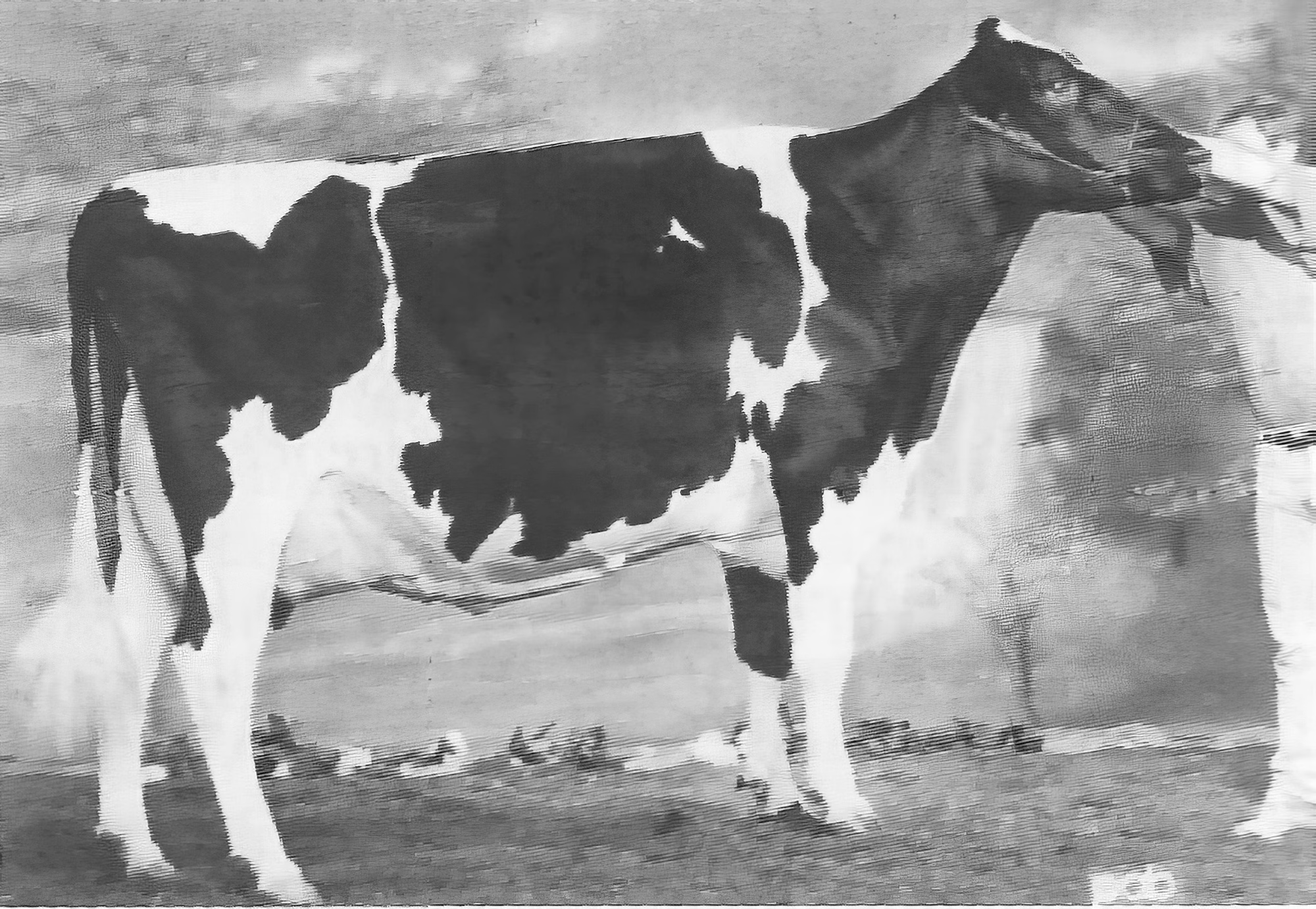
 David Brown, like all of us, had his flaws. Endowed with remarkable skills as a breeder, showman, and promoter, he was often hailed as the finest cattleman of his era. Growing up on Browndale Farms in Paris, Ontario, he had towering expectations to meet. His father, R.F. Brown, was a luminary in the dairy world, winning the esteemed Curtis Clark Achievement Award in 1988 and the Klussendorf Trophy at the 1993 World Dairy Expo. As one of Canada’s most successful breeders, R.F. clinched Premier Breeder and Exhibitor honors at the World Dairy Expo and the Royal Winter Fair. His accolades included five Grand Champions at the Royal Winter Fair: Green Elms Echo Christina (1972 and dam of Browndale Commissioner), Vanlea Nugget Joyce (1974), Marfield Marquis Molly (1978), and Du-Ma-Ti Valiant Boots Jewel (1988). David certainly had big shoes to fill. And fill them he did. His list of accomplishments was extensive: He led Ontario’s top herd in production in 1991, bred two All-Canadian Breeder’s Herd groups, and produced the All-American Best Three Females in 1998. He was twice crowned Premier Breeder at the International Holstein Show and accumulated 92 awards in All-Canadian and All-American contests from 1986 through 2004. Yet, despite two auction sales in 1991 and 1996 aimed at reducing his debts, financial relief was elusive. Over time, his wife left him, his children moved away, and his prized cattle were sold off. Eventually, David relocated to Colombia, where he passed away. Views on Brown are mixed—some saw him as a charming inspiration, while others regarded him as a rule-bending showman or an irresponsible debtor. Nonetheless, his rapid ascent and remarkable achievements in his lifetime are indisputable. Many wealthy individuals have invested vast sums of money into the cattle industry, chasing the same recognition, only to leave empty-handed. What distinguished David Brown was his nearly mystical talent for preparing animals for the show ring and transforming them into champions.
David Brown, like all of us, had his flaws. Endowed with remarkable skills as a breeder, showman, and promoter, he was often hailed as the finest cattleman of his era. Growing up on Browndale Farms in Paris, Ontario, he had towering expectations to meet. His father, R.F. Brown, was a luminary in the dairy world, winning the esteemed Curtis Clark Achievement Award in 1988 and the Klussendorf Trophy at the 1993 World Dairy Expo. As one of Canada’s most successful breeders, R.F. clinched Premier Breeder and Exhibitor honors at the World Dairy Expo and the Royal Winter Fair. His accolades included five Grand Champions at the Royal Winter Fair: Green Elms Echo Christina (1972 and dam of Browndale Commissioner), Vanlea Nugget Joyce (1974), Marfield Marquis Molly (1978), and Du-Ma-Ti Valiant Boots Jewel (1988). David certainly had big shoes to fill. And fill them he did. His list of accomplishments was extensive: He led Ontario’s top herd in production in 1991, bred two All-Canadian Breeder’s Herd groups, and produced the All-American Best Three Females in 1998. He was twice crowned Premier Breeder at the International Holstein Show and accumulated 92 awards in All-Canadian and All-American contests from 1986 through 2004. Yet, despite two auction sales in 1991 and 1996 aimed at reducing his debts, financial relief was elusive. Over time, his wife left him, his children moved away, and his prized cattle were sold off. Eventually, David relocated to Colombia, where he passed away. Views on Brown are mixed—some saw him as a charming inspiration, while others regarded him as a rule-bending showman or an irresponsible debtor. Nonetheless, his rapid ascent and remarkable achievements in his lifetime are indisputable. Many wealthy individuals have invested vast sums of money into the cattle industry, chasing the same recognition, only to leave empty-handed. What distinguished David Brown was his nearly mystical talent for preparing animals for the show ring and transforming them into champions.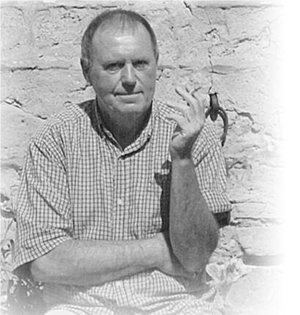 Edward Young Morwick, a distinguished author, cattle breeder, and lawyer, was born in 1945 on the Holstein dairy farm owned by his father, Hugh G. Morwick. His early memories of his mother carrying him through the cow aisles profoundly shaped his trajectory. Although Edward pursued a career in law, excelling immediately by finishing second out of 306 in his first year, he harbored a deep-seated passion for journalism. This led to his later work chronicling Holstein’s cow history. His seminal work, “The Chosen Breed and The Holstein History,” stands as a cornerstone for those delving into the evolution of the North American Holstein breed. In it, he compellingly argues that the most influential bulls were those of the early historical period. (Read more:
Edward Young Morwick, a distinguished author, cattle breeder, and lawyer, was born in 1945 on the Holstein dairy farm owned by his father, Hugh G. Morwick. His early memories of his mother carrying him through the cow aisles profoundly shaped his trajectory. Although Edward pursued a career in law, excelling immediately by finishing second out of 306 in his first year, he harbored a deep-seated passion for journalism. This led to his later work chronicling Holstein’s cow history. His seminal work, “The Chosen Breed and The Holstein History,” stands as a cornerstone for those delving into the evolution of the North American Holstein breed. In it, he compellingly argues that the most influential bulls were those of the early historical period. (Read more: 